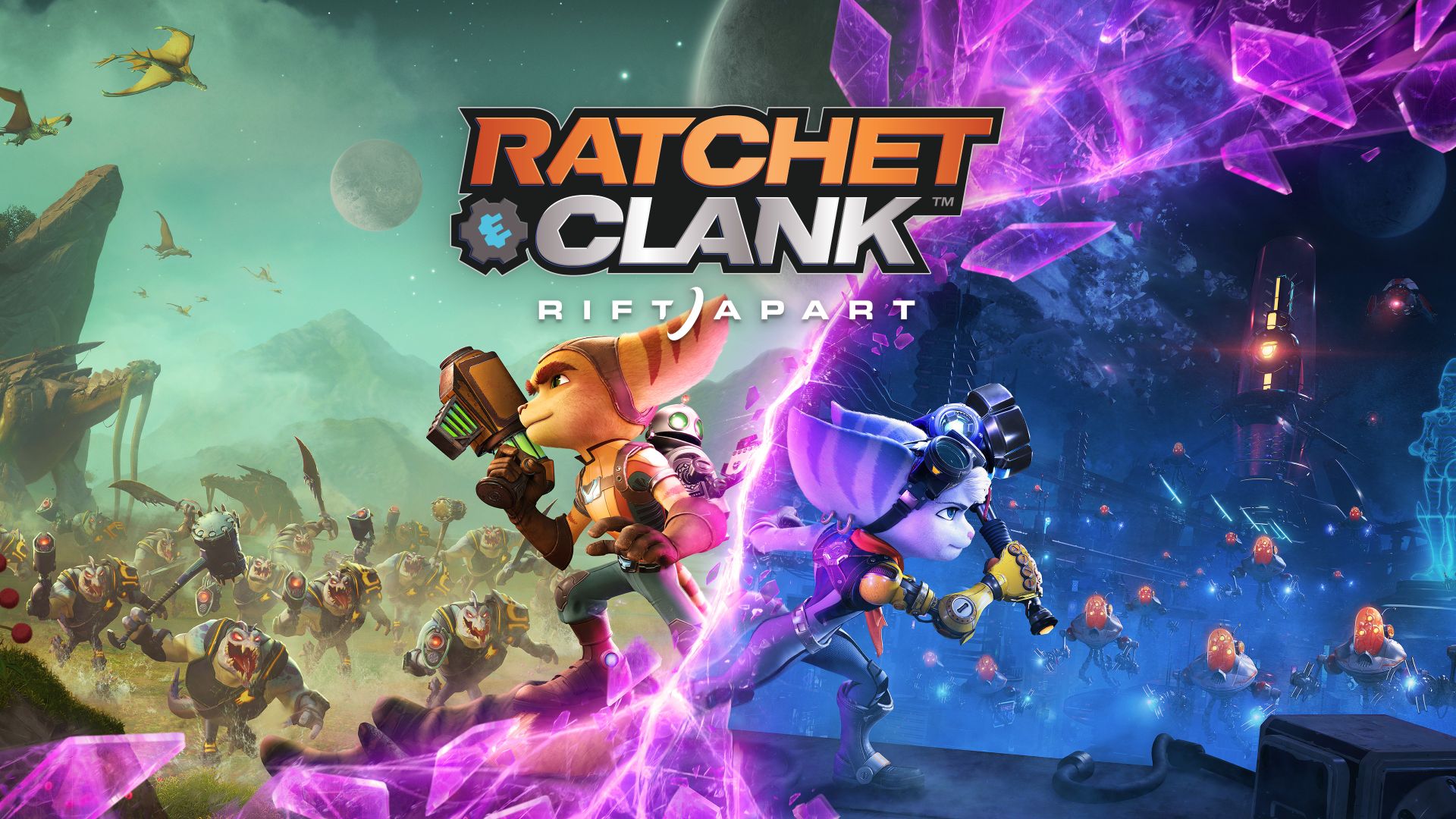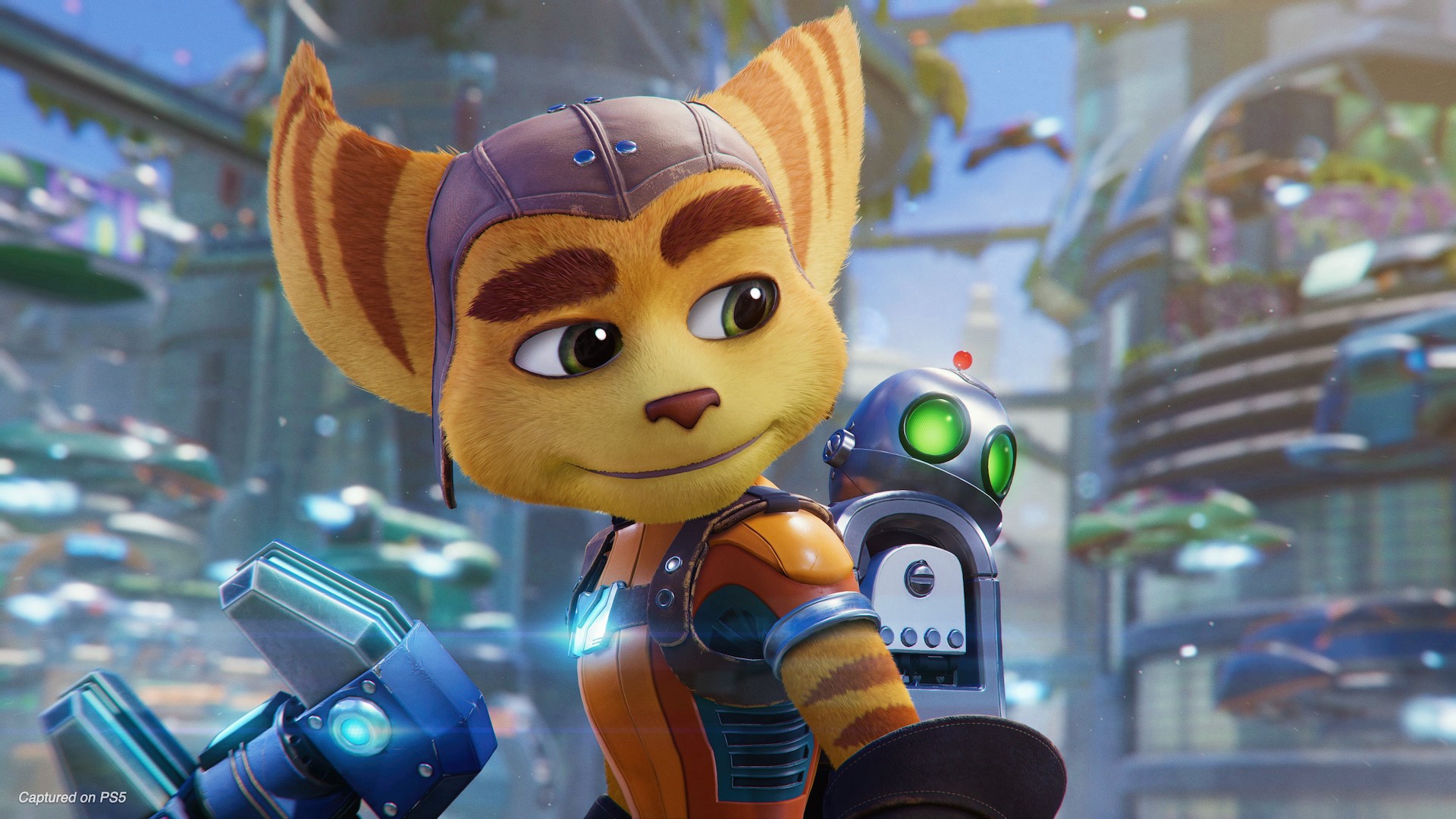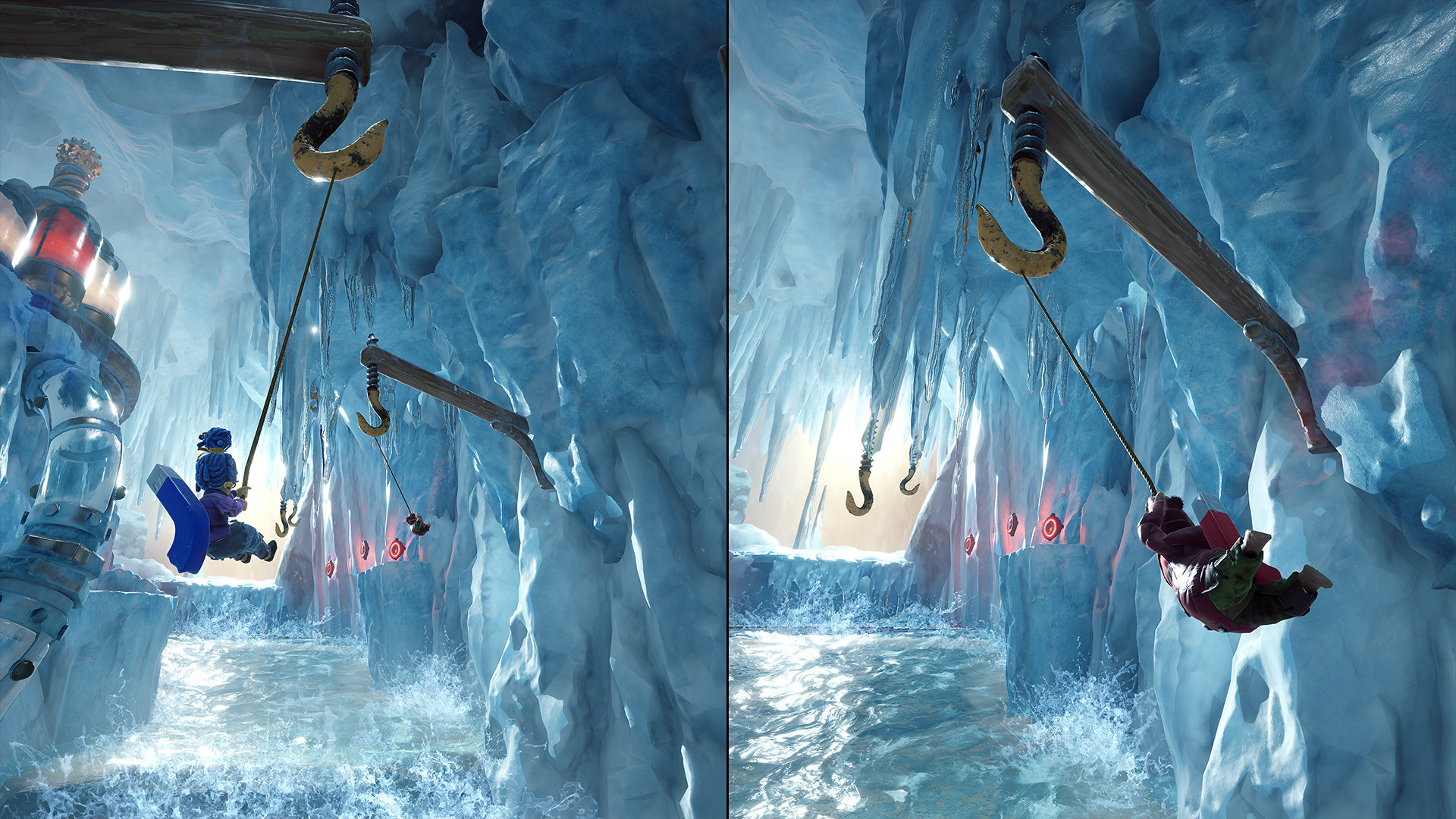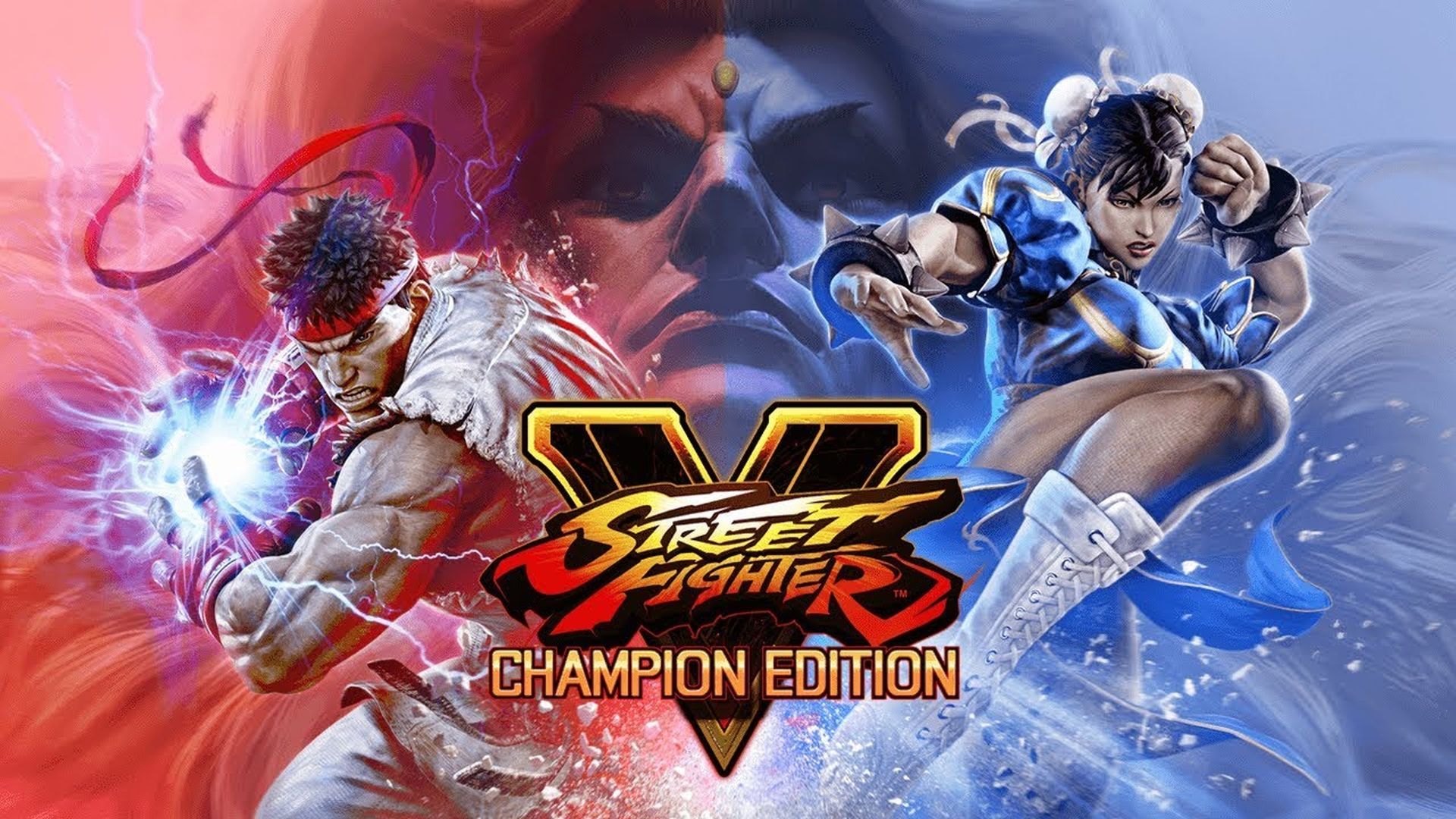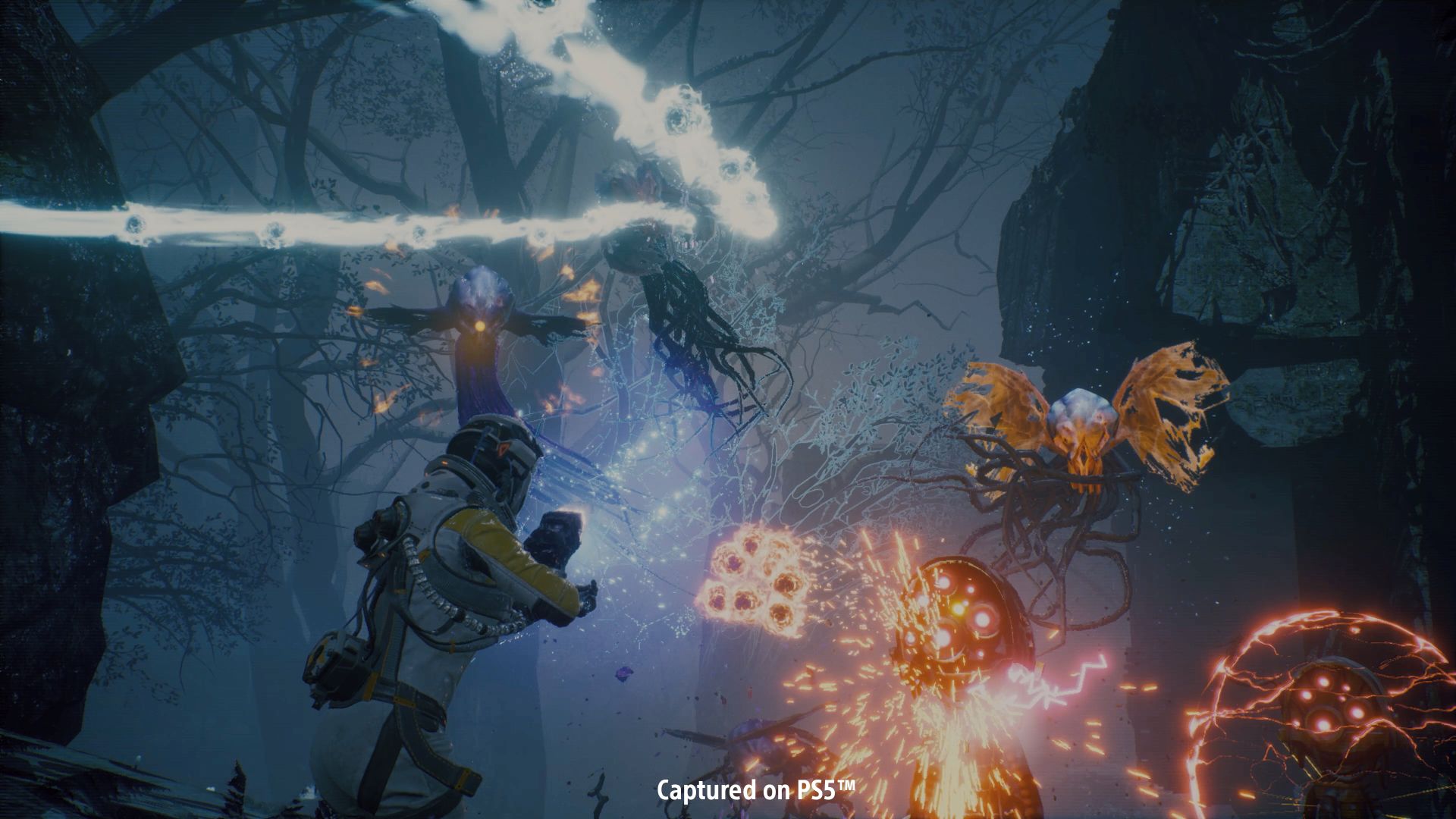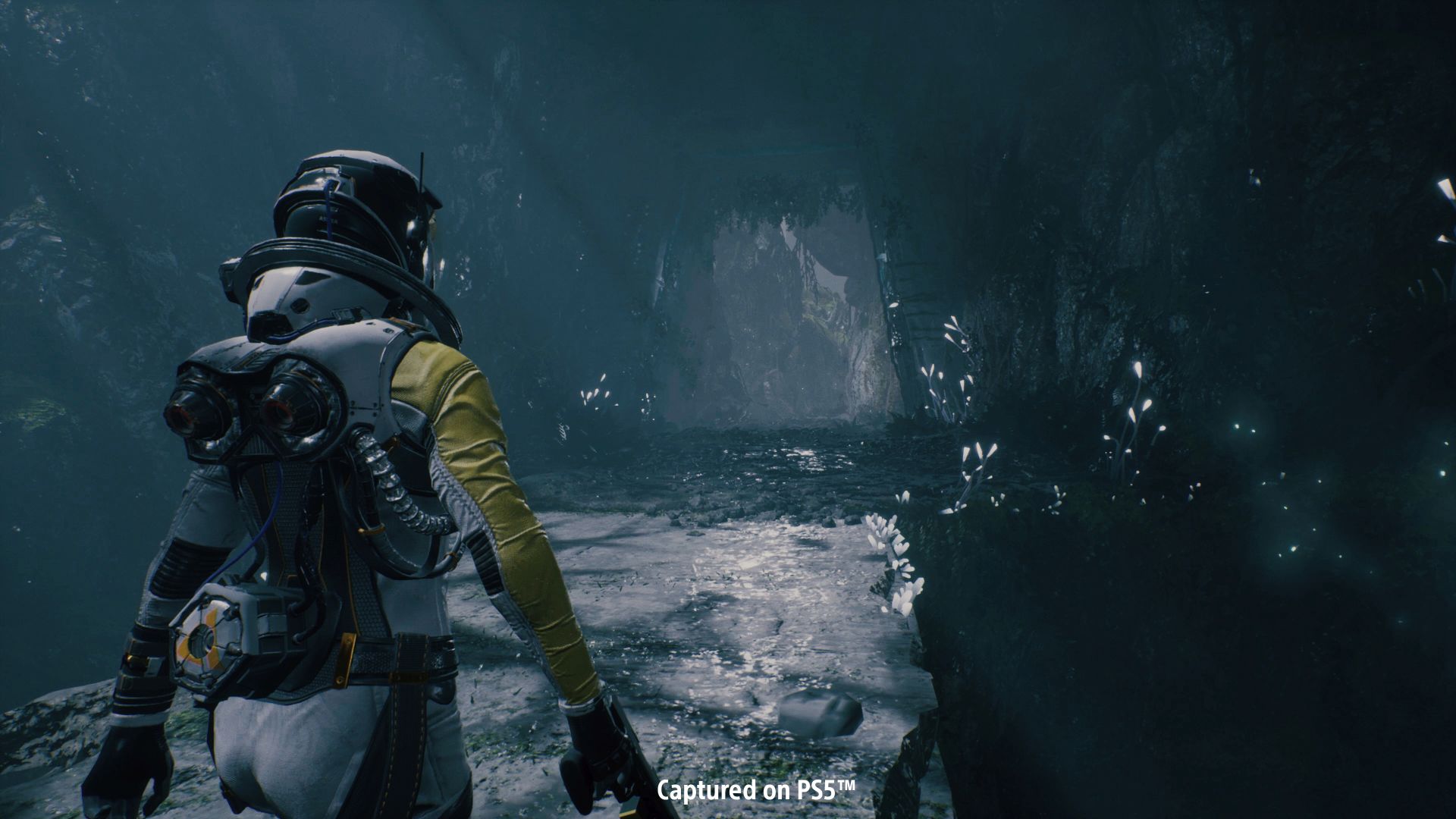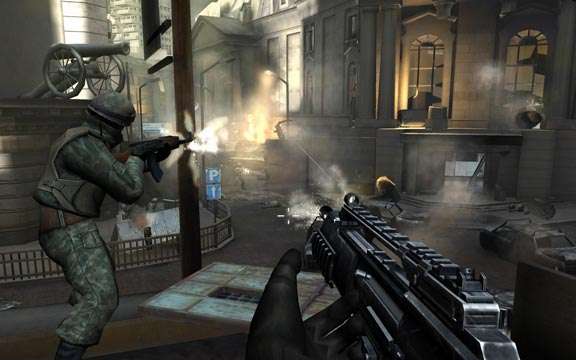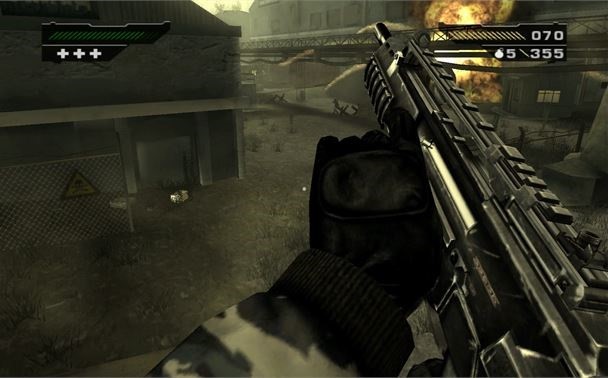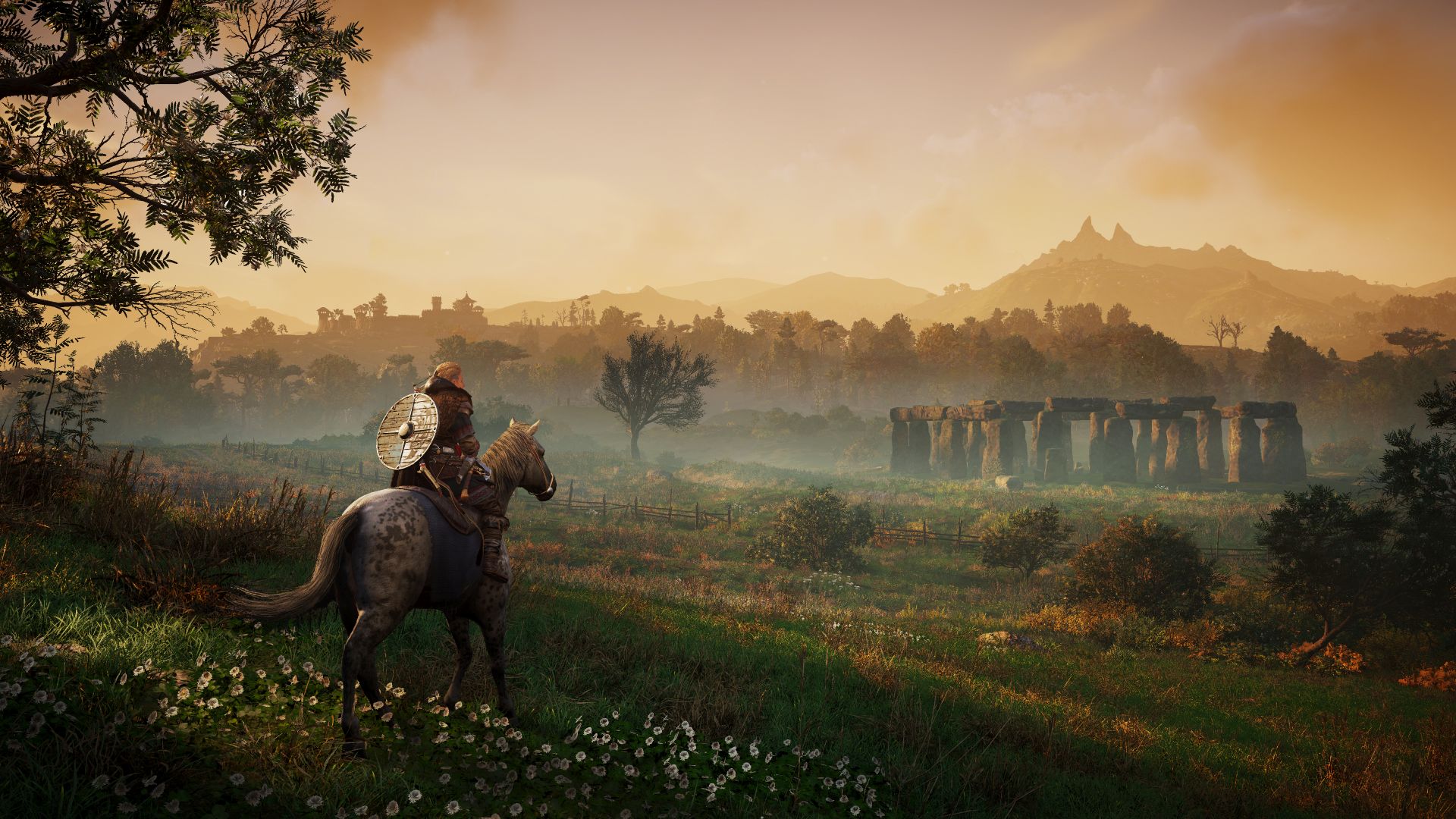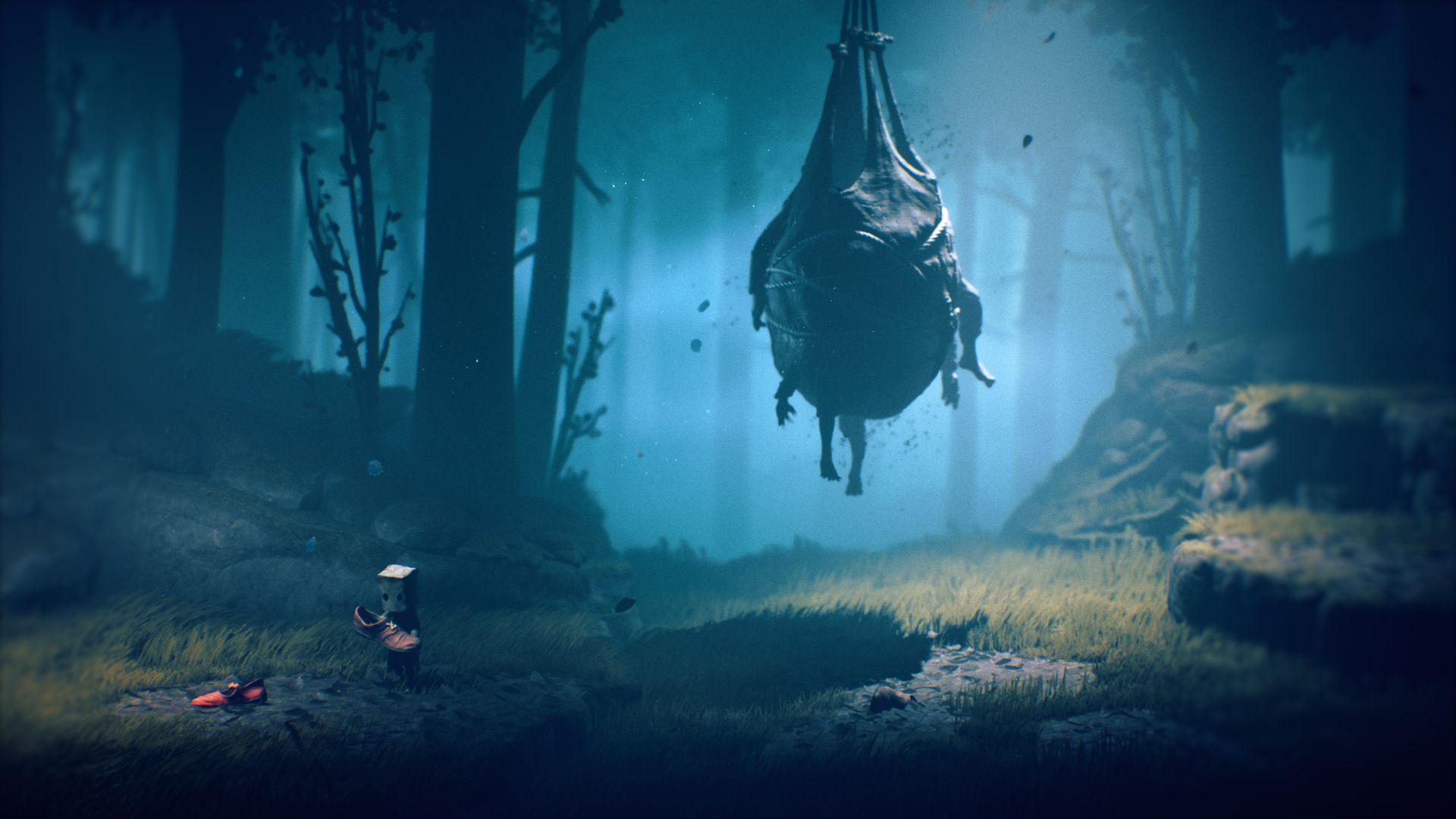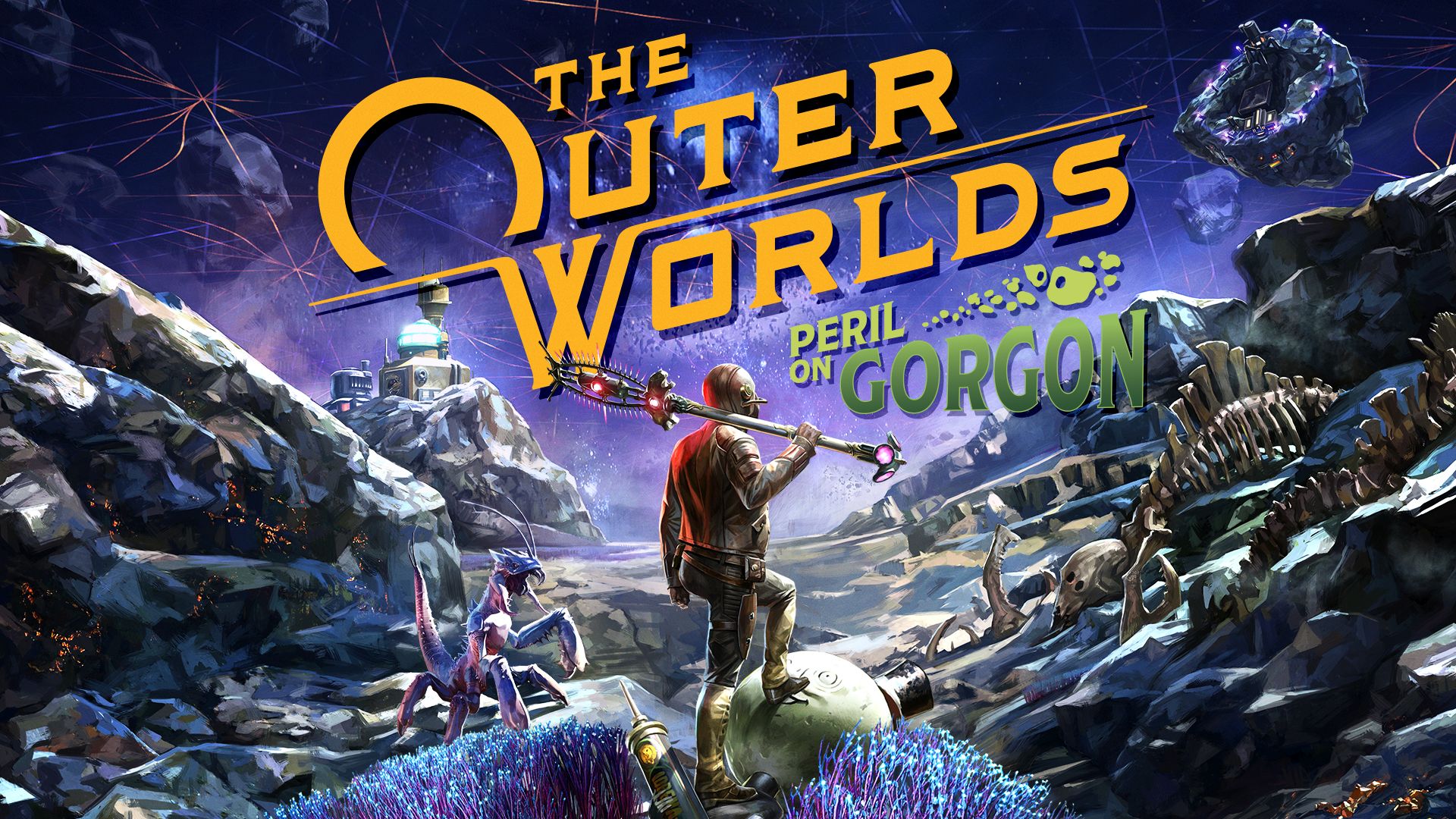Ratchet and Clank: Rift Apart Pre-Order Bonus Includes Carbonox Armor, Pixelizer
Insomniac Games and Sony shared a release date for Ratchet and Clank: Rift Apart at last along with pre-orders going live. Those who pre-order the Standard Edition are in for some interesting bonuses, including the Carbonox Armor from Ratchet and Clank: Going Commando. Of course, it looks snazzier than ever and even has ray-traced reflections.
The Pixelizer from Ratchet and Clank (2016) is also included and has seen its own share of visual updates. Those who purchase the Digital Deluxe Edition will get the above along with five armor sets, a sticker pack for use in Photo Mode (the series' first ever), and a digital artbook and soundtrack. You also get 20 Raritanium for upgrading weapons, providing an early advantage.
Ratchet and Clank: Rift Apart is out on June 11th for PS5. The story sees dimensional collapse causing multiple rifts to different worlds. Ratchet and Clank are subsequently separated across different dimensions and must reunited. Meanwhile, a female Lombax resistance fighter struggles against the evil robot emperor that's attempting to wipe out all organic life in the omniverse. Though her name wasn't revealed, Insomniac notes that we'll be feeling "rosy" soon so stay tuned.


Ratchet and Clank: Rift Apart Releases on June 11th
Insomniac Games' Ratchet and Clank: Rift Apart finally has a release date. The 3D platformer launches on June 11th, exclusively for PlayStation 5, and is currently available to pre-order. Though the trailer below doesn't feature any new gameplay, it still highlights how sharp the game looks.
Ratchet and Clank: Rift Apart focuses on the iconic duo as they venture across multiple realities. A dimensional collapse is occurring, which has opened up rifts to different worlds and time periods, and a robot emperor is looking to use this to wipe out all organic life. It's up to Ratchet, Clank and a mysterious female Lombax to stop him.
Along with the same platforming and shooting of previous games, Ratchet and Clank: Rift Apart makes use of rifts to quickly traverse one's surroundings. These also lead to quick transitions between worlds, seamlessly handled by the PS5's SSD. Stay tuned for more details – and ideally more gameplay – in the coming months.
Destiny 2 – Eyes of Tomorrow Bugged, Bungie Investigating
Balance changes are always a sore spot for players, especially in Destiny 2. But when Eyes of Tomorrow, the Exotic rocket launcher earned from the Deep Stone Crypt raid, was found to be doing less damage against regular bosses, fans quickly voiced their outrage. Fortunately, it seems that this particular balance pass wasn't intentional.
After numerous reports from players, lead community manager Cozmo on Twitter noted that "any damage reductions to Eyes of Tomorrow were definitely not intentional and the team is currently investigating it as a bug." It was further stated that the perk "Adaptive Ordinance" is working as intended. As for why the Cosmodrome Strikes were missing from the Director, he noted that it was being looked into.
Eyes of Tomorrow is a fairly strong weapon in theory – many heralded it as Gjallarhorn 2.0. However, it was quickly found to deal less damage against raid bosses, making it less than ideal for the same (and its meager drop rate didn't help). Bungie has taken to buffing rocket launchers overall this season but individual Exotics have their own unique balancing done.
Regardless, those waiting for a bug fix will have to be patient. Season of the Chosen recently kicked off and added the new Battlegrounds activities along with The Devil's Lair and Fallen S.A.B.E.R. Strikes from Destiny 1. The new Proving Grounds Strike is slated to go live next month.
Just confirmed that any damage reductions to Eyes of Tomorrow were definitely not intentional and the team is currently investigating it as a bug.
Adaptive Ordinance only triggering off of kills is intentional as referenced in it's description. https://t.co/5MmgUXp2kq
— Cozmo (@Cozmo23) February 10, 2021
Looking into this.
— Cozmo (@Cozmo23) February 10, 2021
"Narrative Games Can Become Very Repetitive" – Josef Fares Promises Max Variety for It Takes Two
The famously outspoken Josef Fares and his team at Hazelight Studios are crafting the kinds of experiences the likes of which pretty much no one else in the industry is even attemting to create. A Way Out delivered a solid co-op narrative-driven game, and though the upcoming It Takes Two looks like a very different beast in terms of tone and setting and even its aesthetic, that singular focus on co-op and on telling a story is something that still drives the game.
And according to Fares, who has been emphasizing how gameplay and narrative need to be perfectly married in games for some time now, It Takes Two is going to ensure that its narrative ambitions are matched by the actual playing experience of the game.
The upcoming co-op game plans to do that by ensuring the maximum level of gameplay variety and mechanical variation possible. Speaking with GamingBolt in a recent interview, Fares – the head of Hazelight and director of It Takes Two and the aforementioned A Way Out – said that his studio's upcoming game is going to "take the world record" for how much variety it has, with Hazelight having ensured that mechanics aren't repeated ad nauseum, which is something that Fares feels narrative games are often guilty of.
"Let me say this- I think this game will take the world record in actually how much variation is in game," Fares said. "And there are many reasons for that. One of the things is that I personally believe that narrative games can become very repetitive, I do believe that we need to get away from finding one mechanic and then just repeating it over and over again. It doesn't fit the narrative experience if you ask me. So in It Takes Two, what we're trying to do is that every situation the characters are in, you're playing it."
Fares went on to talk about how vast numbers of players do not play story-focused games through to completion, and in his view, a lot of that is down to those experiences becoming repetitive.
"The gameplay should reflect what goes on the narrative, but also to keep the players invested in the story and keep the game fresh and unique," he said. "I mean, my hope is that players finish the game. I mean, f**k, it bothers me that the statistics we have on games, people don't even finish them. It's crazy how the statistics look like. And I think one of the reasons is that the games are too repetitive. I don't know, it's an old design rule. I mean, it's fine if you're doing this looter shooter stuff, when you shoot and you level up and blah blah blah, but not in narrative games. I really do believe that you have to have a varied experience."
After re-iterating (in typically emphatic fashion) that It Takes Two is going to be "impossible" to get tired of over the course of its runtime, he acknowledged that though aiming for such levels of variation isn't always a good idea from a production perspective, it's the kind of experiences Hazelight want to be making.
"I mean, I can guarantee you, I'm ready to give you $1,000 if someone genuinely think that they get tired of It Takes Two," Fares said. "It's impossible, because there will be something new around every corner for a story reason, or for what they go through. So, whatever happens, or whatever they meet, you're playing it, which I think is awesome. And yes, from a production perspective- you know, my team is not always happy about this, but they've gotten used to this because I love variation. And of course, it takes time. However, we've used it, and we love it. This is the kind of game that we want to do."
During the same interview, Fares also spoke about the differing strategies of Microsoft and Sony as platform holders, and why he currently prefers the latter's approach of focusing on narrative-heavy single player experiences. Read more on that through here.
It Takes Two is out on March 26 for PS5, Xbox Series X/S, PS4, Xbox One, and PC, though Fares says a Nintendo Switch version looks unlikely.
Our full interview with Fares will be live soon, so stay tuned for that.
Street Fighter 5: Champion Edition's Final Season 5 Character Seems To Have Leaked – Rumor
With rumors swirling about the inevitable release of Street Fighter 6, it was something of a surprise when it was announced that Street Fighter 5 would get another season. The fifth season was detailed with some interesting character choices as well as a mystery on who would be the final character. Well, it seems a snafu from Twitch Gaming spilled the beans early.
A news post from Twitch Gaming, that has since been deleted, mentioned the newest fighter for Street Fighter 5 being Eleven. The character is a precursor to the shapeshifting fighter Twelve from Street Fighter 3. The character has shown up in some of the individual character stories as well, so it's not all that shocking if it ends up being true. They've since taken down the post, but the folks at ResetERA kept it saved.
Street Fighter 5: Champion Edition is available now on PlayStation 4 and PC. The first character of the new season, Dan, is set to come sometime this month.
Returnal is Looking Like an Early Visual Showcase for the PS5
Roguelike shooters have experienced something of a resurgence over the past couple of years. Looter shooters like Borderlands 3, Destiny 2, and The Division 2 have put loot-based progression and mechanics front and center. While they're enjoying the lion's share of mindspace, smaller studios have been cranking out loot-based roguelike shooters for quite some time now. Ziggurat 2 came out just months ago, the follow-up to one of the best-received roguelike shooters out there. Titles like Strafe have quietly carried the genre through on PC. 16 bit-esque roguelikes like Dead Cells have also been remarkably well received over the years.
Despite the immense popularity of roguelikes, we've yet to see a AAA developer take the genre seriously: until now, this has been pure indie territory. Housemarque's Returnal, set to release this April on the PlayStation 5, is looking to change that. Right from the announcement trailer, it's evident that Returnal is very much a AAA experience: we're looking at visuals that easily exceed anything we've seen on last-gen platforms, smooth cinematics, and more: this clearly isn't a roguelike as we've come to know them. It also isn't a Housemarque title as we've come to know them: the studio is best-known for creating Resogun, a bullet-hell shooter on PS4.
While the game's mechanics and polish are definite highlights, we're more interested in how it stacks up at a technical level: this is one of the first PlayStation 5 exclusives to launch outside the cross-gen period entirely unconstrained by the limitations of base PlayStation 4 hardware. How does Returnal push things forward on the PlayStation 5? As the first AAA roguelike out there, does it do justice to Sony's hardware?
Texture work and model quality
Apart from the enhanced CPU and GPU capabilities, the PlayStation 5 offers substantially more VRAM than its predecessor. Housemarque didn't have to make do with 5.5 GB of accessible memory and the results are evident in Returnal's excellent material quality. We see high-fidelity 4K textures being used across the board for environmental and character rendering. This is a definitive step up from eighth-gen titles. In closeup shots, it's nice to see texture detail holding up well, even on incidental assets like moss-covered ruins.
As far as model quality is concerned, Housemarque has deployed high poly-count assets for both the main character and enemies. Selene's model is surprisingly detailed in close-up cinematic shots. Moreover, the high quality skin shading and use of sub-surface light transport help deliver a near-photorealistic experience. We were a bit disappointed with hair rendering in Returnal. Selene's got a case of helmet hair. While the short haircut and high quality transparencies used are convincing in still shot, the lack of hair movement is a bit jarring, especially considering how animated hair went from incidental Gameworks effect to bog standard on console over the course of the eighth-gen.
Lighting and shadow rendering
Ray tracing is becoming an increasingly standard rendering technique in ninth-gen games. While it hasn't explicitly been name-dropped for Returnal, it looks like the game makes use of ray-traced reflections. In the opening cinematic of the gameplay trailer, the console/command hub in front of Selene – an object that isn't in the camera's view – is briefly reflected on her helmet. It's not exactly a transformative change. However, we think Housemarque is taking the Resident Evil Village Maiden demo approach here: judicious use of ray-tracing with a relatively high smoothness cutoff to maximize the impact in scenes that would really benefit from it, without compromising performance. As a roguelike shooter, player skill will matter, so we don't expect Returnal to feature decadent amounts of ray-traced effects at the cost of performance.
Apart from RT, we see a solid global illumination implementation here. Moreover, many particle effects in-game emit dynamic light: this greatly contributes to the atmosphere in darker external environments. Volumetric effects also play a big role here: Volumetric fog offers thick cover that completely obscures parts of the play area contributing to the overall moody feel. Particle volumes are affected by dynamic light sources – Selene's gunfire often lights up puffs of fog and smoke. Interestingly, particle effects from gunfire and explosions last quite a bit longer here than in current-gen games, hinting at a relatively lax approach to particle culling, allowing explosions and gun-trails to stay on screen for longer.
Shadow rendering is interesting: the game appears to feature some form of contact-hardening, with the sharpness and definition of shadows determined by their distance and position from light sources. Returnal appears to be using a deferred renderer. We see a large number of dynamic light sources in play, from particle effects to skylighting and exotic in-game assets.
Post-processing
Returnal makes great use of its post-process pipeline to emphasize its rich, otherworldly atmosphere. Per-object and camera motion blur are implemented to great effect, and we see a subtle depth of field effect in the distant background. A high sample-count ambient occlusion implementation is also in place, helping to ground objects and enemies in the environment.
Returnal makes great use of bloom, and some of the spectacular particle effects and explosions should stand out on a great HDR TV or monitor.
Conclusion
We're still very much in the early days of the ninth console generation. Over on the Xbox and PC, The Medium recently came out as a ninth-gen exclusive. While the latter's a fixed-perspective horror title in the vein of the early Resident Evil games, there's a lot to find in common: we're seeing remarkably asset quality across the board, judicious use of ray-tracing, and a post-process pipeline that isn't compromised by sub-native buffers and low sample counts. Returnal (and The Medium) signpost where ninth-gen visuals are headed: we're looking at higher-fidelity models, no-compromise texture quality, and tasteful use of ray-tracing, as we get past the "puddles everywhere!" phase. It's not exactly a night-and-day difference. But it's not easy to see how well the base PlayStation 4 would run this game, and that's a good thing: PlayStation exclusives are starting to move beyond vintage 2013 hardware.
Will Ever See the Release of Black 2?
Few games shook up the first person shooter scene of 2006 as much as Black from Criterion games and EA. Sure, you still had Call of Duty, Splinter Cell, and Medal of Honor games doing their thing, but Black was such a raw, unfiltered excursion into a safari of outlandish Hollywood-style action that few games had really attempted with such specific intent up to that point and even fewer have been able to as effectively pull it off – if any. The core tenets of Black's gameplay were simple. Clear rooms of all enemies, steal enemy intel, and blow crap up. Often doing these things in rapid succession of each other if not simultaneously. Black didn't reinvent the wheel in this regard.
On paper these were all things that you could find in countless other similar games before and after Black, but what Criterion was able to do with those core elements was dress them up in such an effective non-stop haze of explosions, bullets, and absurdly awesome-looking guns that you never really had a moment to realize how familiar those waters were. You were too busy having fun blowing up entire buildings with well-placed rockets and shooting doors off their hinges with SPAS-12s to think about that. For all the excellent work that went into Black, it was received pretty well by critics and sold reasonably well, too. Criterion's unbroken devotion to over-the-top action and reloading animations paid off by making Black a hit with most critics, with the only prominent complaints being a lack of the multiplayer mode and limited replayability.
Like the lingering concussive after-effects of one of the game's many explosions, Black continues ringing in the minds of shooter fans. Often ending up on prominent "top 10 first person shooters" lists and various other nostalgia pieces – like this one. Knowing that, you'd think Black would have become its own franchise by now – or at least earned a sequel or two, but no such sequel has ever surfaced. It's not every day that a classic like Black comes out and doesn't turn into a trilogy if not more than that. So why hasn't it? Why hasn't Black gone on to become a franchisee at least as long as many lesser shooters have? What the hell happened to Black? And where the hell is Black 2?
Something that's probably worth pointing out before any theories get created; Criterion was primarily a developer of sports and racing games. From the hoverboarding game Airblade early in the PS2s life, to the Burnout series, and eventually a couple of Need for Speed titles, Criterium wasn't really known for making shooters, and that just wasn't really their role within EA. They already had teams in place for Battlefield and Medal of Honor games, so one could surmise that to have a third team spending time in that same genre, while they were already seeing relative success in two completely different franchises, might seem like an endeavor into redundancy.
While you or I may be inclined to feel like, "hey, the more the merrier!" I can also understand why people looking to maximize profits and get a good read on what franchises are doing the best within the company wouldn't want to risk cannibalizing themselves and making their long-standing first person shooter franchises appear weaker than they actually are in terms of sales. I have no concrete evidence that this was the thought process over at EA but I wouldn't be surprised at all if that came up when discussions of a Black 2 wear being had.
We do know that those discussions did happen though. According to an interview conducted a while back, co-creator and designer of Black, Stuart Black, did admit that plans for a sequel to Black were definitely a thing for a while, but we're ultimately scrapped because of differences between Stuart and Electronic Arts. Unfortunately, details on what those differences were and how exactly they led to the downfall of Black 2 remain elusive. but knowing how big game Publishers were trying to cram multiplayer modes into everything back then one could reasonably suspect that that might be part of the problem.
Black was criticized for not having multiplayer in a time where pretty much every shooter was expected to have one. Even the most generic, uninspired multiplayer modes generally added to how well games were reviewed back then, and it's likely that a shift in focus from a highly orchestrated single player over to a more sprawling multiplayer experience might have been pushed on Criterion during development, which obviously wouldn't have jived with the creators because that's just not what Black was about. Black was a linear, focused, set-piece heavy game. For a sequel to be anything other than that would have just felt too different.
Regardless of what exactly happened, Stuart Black would eventually move on from Criterion and EA to make the closest thing to Black 2 he was going to be able to with the help of a new team over at Codemasters – another studio with a disproportionate amount of experience in racing games. The game of course could not be called Black 2, so the title Bodycount was decided on, which pretty much gets the same vibe across I suppose. Bodycount would sport a lot of the same ideas that Black did. Destructible environments, non-stop firefights, and a very purposeful devotion to action-movie style obliteration of the enemy.
Bodycount would add another layer on top of the moment-to-moment gameplay with almost Call of Duty-style scorestreaks that rewarded headshots with higher scores and devastating power-ups. Interestingly enough Bodycount would also have multiplayer in the form of competitive death matches as well as a co-operative horde mode where players would team up and survive as long as they could against wave after wave of enemy forces. Despite Codemasters bending to the apparent will of the market by including those extra modes and a scoring system that encouraged multiple playthroughs, Bodycount wouldn't be received nearly as well as Black was. While most reviewers would cite that this type of action game never fully goes out of style, some common complaints among players and critics alike would surface.
For instance, the shooter market was different in 2011 than it was in 2006, and many other shooters like Bulletstorm had come along to claim the throne of insane bombastic gameplay that the original Black may have had a tighter grip on five years prior. This made Bodycount seem tame by the current standards, and thusly, not nearly as exciting. On top of that, the destructible environments had also already been done better by the Bad Company games, which also came out between Black and Bodycount. Aside from that, while the scoring system did provide a little bit of depth to the game play, it also sort of undercut its own gameplay ideas by encouraging you to play slowly and methodically to get the best possible scores.
If you played Bodycount the way you played Black, guns blazing and precision be damned, you would be punished with low scores. Yet, to be rewarded with power-ups and favorable scores, the gameplay would suddenly feel more like a much more generic affair. It's hard to not respect what Bodycount was trying to do, but at the end of the day it was not a worthy follow-up to Black, and may have even contributed to EA's lack of interest in the IP with how quickly Codemasters' new game fizzled out.
That said the failings of Bodycount are not necessarily indicative of a lack of interest in Black 2. And given the climate of first-person shooters today, where you either have the action of Wolfenstein on one side and the straight down-the-line military shooters of Battlefield and Call of Duty on the other, I think there is an argument to be made that there is room for something to take the best ideas from both of those worlds and exist somewhere in the middle. Given that Criterion has recently been put back in the driver's seat for the Need for Speed series, I wouldn't expect them to have the time or the interest in a Black 2 for some time to come, but the IP still exists over at EA. If they're ever so inclined to take a little risk we could end up with a Black 2 someday, but for now I wouldn't hold my breath.
Note: The views expressed in this article are those of the author and do not necessarily represent the views of, and should not be attributed to, GamingBolt as an organization.
As multiple developers and publishers have proven over the years, single player experiences and prolonged and strong post-launch support aren't mutually exclusive things. Assassin's Creed Odyssey was a perfect example of that, with the game continuing to receive free quests, a Discovery Mode tour, countless updates, and, of course, two major expansions, over the course of more than a year following its release.
Ubisoft had already outlined their post-launch plans for Assassin's Creed Valhalla before the open world action RPG launched last year, and it was clear that they have similar plans for it as they did for Odyssey. Speaking recently during Ubisoft's quarterly earnings call though, chief financial officer Frederick Duguet said that their plans for Valhalla's post-launch support are even bigger.
After re-iterating that Assassin's Creed Valhalla was the biggest launch in the series' history (though he did say that that was in terms of "value", with Assassin's Creed 3 still having sold more units at launch), Duguet said that Ubisoft is planning "longer and stronger" post-launch support for the game in order to maintain its momentum. Duguet also said that Valhalla was the second-highest selling of all the games that launched on PS5 and Xbox Series X/S last Holiday- one would assume Call of Duty: Black Ops Cold War was the highest.
Assassin's Creed Valhalla has two paid expansions planned. Wrath of the Druids launches this Spring, with The Siege of Paris following not long afterward in the Summer. The Discovery Tour Mode will also be coming soon, while Valhalla is also going to receive regular seasonal updates to add new content and gameplay features.
Assassin's Creed Valhalla is currently available on PS5, Xbox Series X/S, PS4, Xbox One, PC, and Stadia.
Little Nightmares 2 Will Be Free For Stadia Pro In February
Today sees the launch of Little Nightmares 2, the sequel to the acclaimed horror title that sees you taking on the role of small creatures in a world filled with very big dangers. Much like the first game, it will release on a variety of platforms, including Google's troubled Stadia cloud streaming platform. It also seems that if you happen to be a Pro subscriber to the service, you can can get it free.
Google announced that the game would be the fourth title for February's slate of titles that you can get for no additional charge, and you can see the listing through here. The game is regularly $29.99 USD, so not a bad deal, and like all Pro titles will be free the entire month for subscribers and you keep it in your library for as long as you are active on your account. It joins Savage Planet: Employee of the Month Edition, Lara Croft and the Guardian of Light and Enter the Gungeon.
Little Nightmares 2 is available now on PlayStation 4, Xbox One, Switch, PC and Stadia. We were big fans of the game, and you can see our full review of the title through here.
The Outer Worlds: Peril On Gorgon Now Available On Switch
The Outer Worlds was a solid return to a type of RPG many were craving. It's rumored that a sequel is already in the works, and DLC for the titles is still coming. The game also got a Switch version, but up until now it was unclear if the expansions would make its way to the hybrid version. Well, it seems they will.
Peril on Gorgon, the first expansion that released on other platforms in September of last year, is now available for Switch. It's a bit late, obviously, but it was probably a bit more work to get everything ported down for Nintendo's system. The DLC sees you and your crew going to the Gorgon Asteroid after getting a strange message and finding yourself in the middle of a lot of bad dealings, as you'd expect.
The Outer Worlds and Peril on Gorgon are available now on PlayStation 4, Xbox One, Switch and PC. The second expansion, Murder on Eridanos, has been announced for PS4, Xbox One and PC for sometime in March and presumably at a later date for the Switch.
